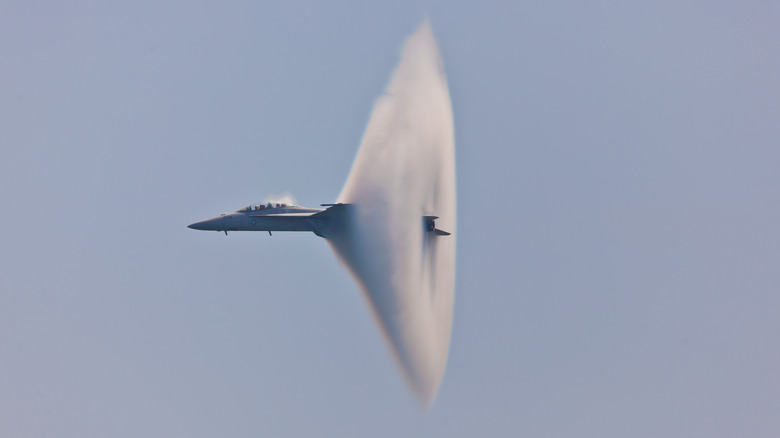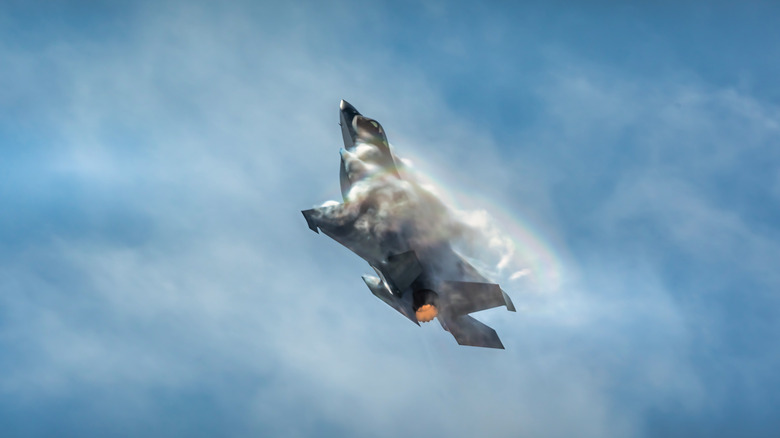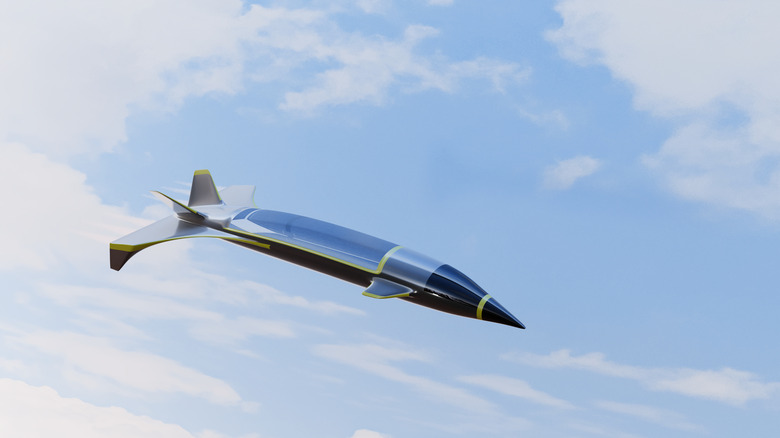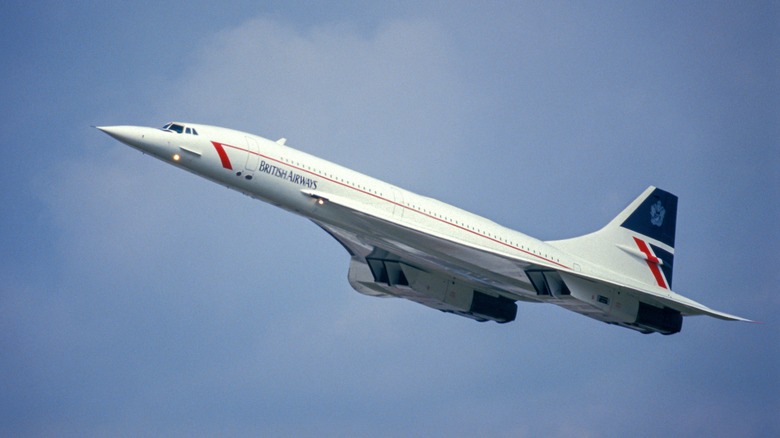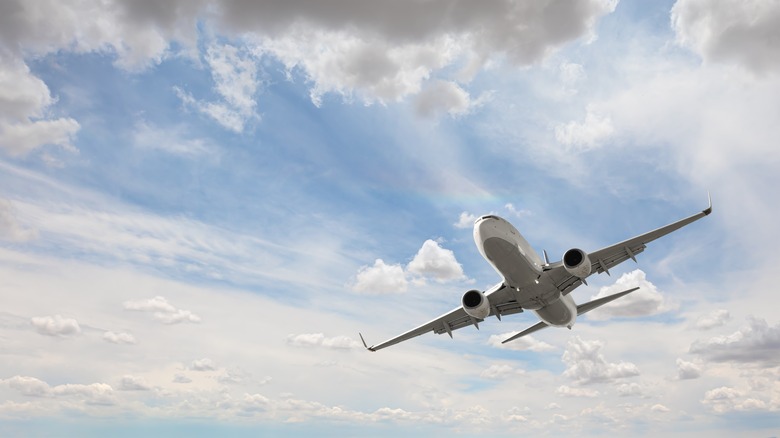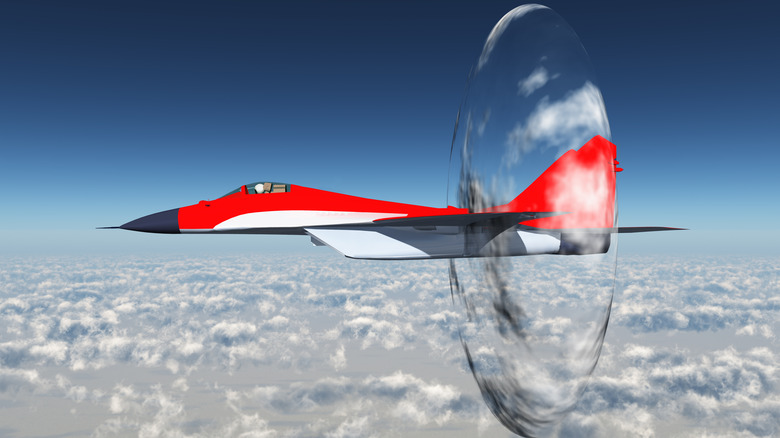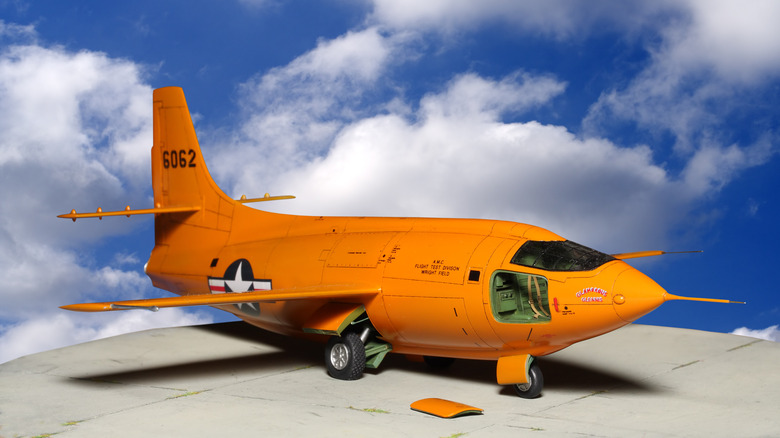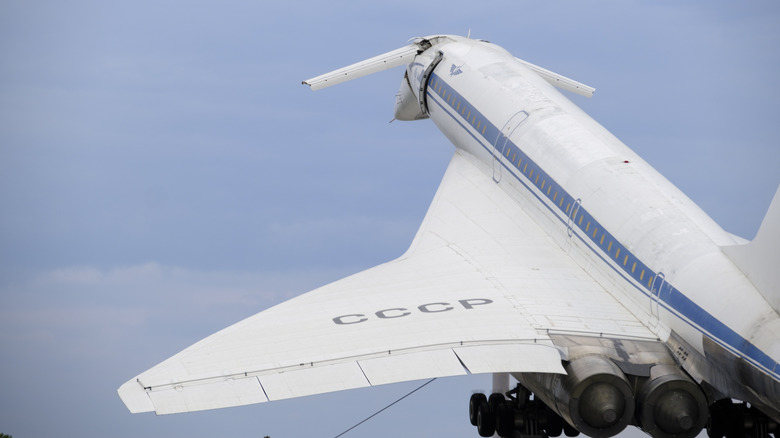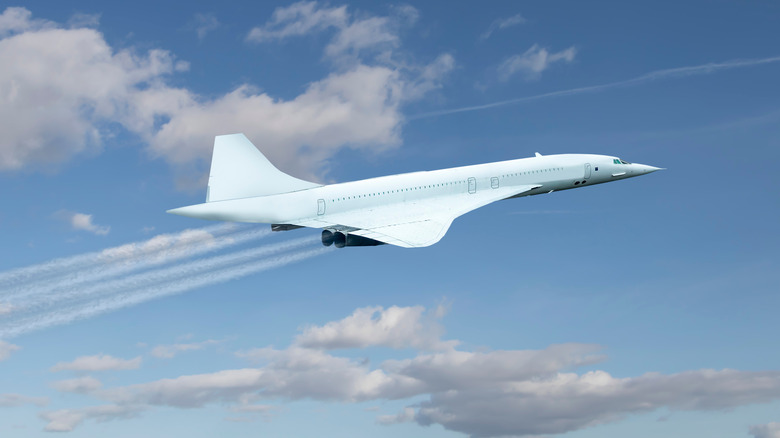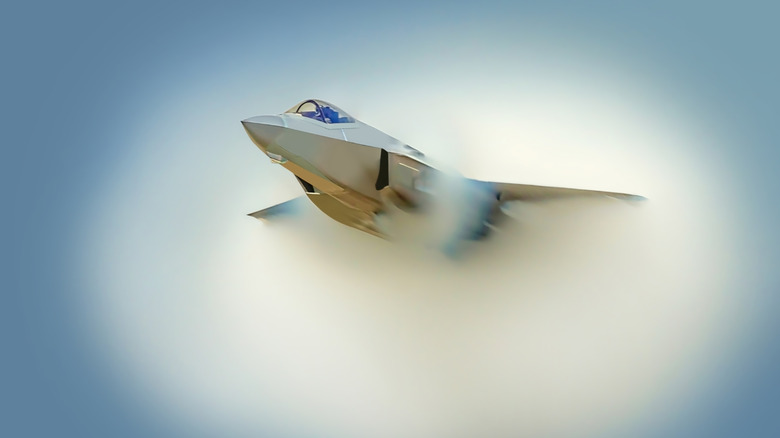Breaking The Sound Barrier: The Science Of Supersonic Flight
Although few people ever get the chance to travel at the speed of sound, it is an alluring flight goal and an impressive technological feat. Though average people have flown at high speeds on airplanes, supersonic flight is almost exclusively reserved for fighter pilots in superpowered jets at speeds far in excess of Mach 1. That hasn't always been the case, though, with commercial airliners that could break the sound barrier having operated in the not-so-distant past.
But what does it take to break the sound barrier and travel faster than the speed of sound? It is a process that involves unique challenges and scientific concepts that are simply not part of the flying experience most people are familiar with. Perfecting supersonic flight was a painstaking process and there is a long history behind it that began more than half a century ago, with the first aircraft capable of traveling at more than Mach 1.
Here we will look at exactly what flying faster than the speed of sound means, and how it is made possible.
What is supersonic flight?
Perhaps the most important question when discussing supersonic flight is understanding exactly what the term means. Essentially, supersonic flight means any type of flight where an aircraft travels faster than the speed of sound. NASA's Edward Haering, a researcher studying sonic booms, describes it as cruising "faster than the sound waves can move out of the way." This is often referred to as Mach 1 and is calculated as the velocity at which sound waves travel through the air. So an aircraft that is capable of traveling at Mach 1 should reach its destination simultaneously with a sound wave, or any other kind of vibration, leaving from the exact same point.
However, there is no set speed of sound. Like the speed of light, the maximum velocity of sound waves depends on a variety of external factors, including the temperature and pressure of the air. At sea level with a temperature of 15°C (59°F), the speed of sound is around 760 miles per hour. Yet, this can fluctuate significantly, with the speed of sound slowing down the higher up you go as a result of a drop in temperature. That's because molecules, which carry the vibrations through the air or other materials, move more slowly at colder temperatures as they have less energy. For that reason, the Mach 1 is calculated as a ratio so that it changes according to the conditions with which the aircraft is met.
The difference with hypersonic flight
Broadly speaking, there are four different classifications for flights in terms of speed. These are used primarily to determine the type of flight depending on the speed the aircraft is traveling. Subsonic refers to any aircraft that is moving slower than Mach 1, meaning it is below the speed of sound. Transonic describes aircraft that are traveling at the speed of sound, usually within a range of between Mach 0.8 and 1.2. Meanwhile, supersonic flight is any flight that is faster than Mach 1.
The fourth classification, hypersonic, is a much faster type of flight where an aircraft passes through the atmosphere at speeds greater than Mach 5. That means they will generally need to be going faster than 3,000 miles per hour to be considered hypersonic. Aircraft that can travel at speeds of Mach 5 or greater are subjected to entirely different conditions than other planes, as they experience a huge amount of heat. According to the National Air and Space Museum, the massive amounts of friction that aircraft are subjected to as the air passes over them during hypersonic flight is the main challenge to overcome in designing functional vehicles.
What happens when something breaks the speed of sound?
Reaching and surpassing the speed of sound has a noticeable effect. It doesn't matter the size or shape of the object; once it passes the sound barrier, it will produce a sonic boom. This shock wave sounds like an explosion or a clap of thunder and is powerful enough to cause structural damage to nearby buildings, measuring up to 110 decibels at its peak. Sonic booms are created because the object moves faster than the sound waves it produces.
As the supersonic aircraft moves through the air, sound waves emanate it and move out in all directions. While accelerating, the sound waves radiating from the front of the aircraft begin to compress together and eventually become one large shock wave due to the pressure. A sonic boom isn't a single release, though, with the wave moving alongside the supersonic aircraft as a cone of sound.
A good example of this is the crack that comes from a whip. This sound isn't caused by the material of the whip coming into contact with itself but rather the loop moving along the whip at ever-increasing speed until it eventually breaks the sound barrier causing the loud cracking sound. Essentially, a whip crack is actually a small sonic boom as part of the whip travels faster than the speed of sound.
Physics of flight
Before understanding exactly how supersonic flight is possible, it helps to have a good idea of how normal subsonic flight works. The physics of flight involves four forces acting upon the aircraft in the form of lift, weight, thrust, and drag. Weight is a result of gravity, and drag is a product of air friction as the aircraft moves through the air. To overcome these two forces, an aircraft must produce enough thrust and lift to get off the ground and remain in the air.
The engines of an aircraft provide the thrust. These components burn fuel and spin turbines, pushing air out to propel the aircraft forward, with more thrust needed at higher speeds as drag increases in proportion to the velocity of air flowing over the structure. At the same time, the shape of the wings forces the air to flow in a specific way both under and over them. This creates a pressure differential on the wings, effectively forcing the aircraft to move up. The angle of attack of a wing can produce more or less lift depending on the needs of the aircraft, allowing it to climb or maintain altitude at different speeds.
A stall can occur during flight when the airflow over the wings is disrupted. This can happen because the plane is moving too slowly or the wing's angle of attack is too high. In either case, the wings can no longer generate sufficient lift as the airflow becomes chaotic.
Physics of supersonic flight
Many of the physics concepts that are in play during normal flight also apply to an aircraft going faster than the speed of sound. However, there are also other properties that need to be considered. The primary concern for a supersonic aircraft is drag. At supersonic speeds, air molecules cannot be pushed out of the way quickly enough, which creates substantially more air friction than is the case with subsonic flight.
This additional drag poses a number of problems and means that supersonic aircraft have to have different designs to typical airliners. They will typically be thin and narrow, improving the way the jet or plane is able to smoothly move through the air, lowering drag by reducing the amount of air friction. Supersonic aircraft often appear as sleek triangular shapes for this purpose.
They also have to be able to withstand high temperatures, with the air friction causing the body of the aircraft to heat up dramatically. Standard materials used by the commercial aviation industry may not be able to cope with these temperature extremes, requiring strong and more durable alloys. Finally, engines need to be far more powerful to provide the necessary thrust and to be able to fly at the higher altitudes necessary to help reduce air friction. However, design choices and components also make flying at subsonic and transonic speeds more difficult.
The history of supersonic flight
Supersonic flight had its beginnings in the 1940s. Partly based on research by a British project to create an aircraft that could break the sound barrier, Bell Aircraft and various U.S. government organizations collaborated to produce the Bell X-1. Essentially, its engineers modeled it on the shape of a bullet, knowing that these objects could easily break the sound barrier. After extensive testing, the rocket-powered aircraft made its first supersonic flight at the hands ofvU.S. pilot Charles "Chuck" Yeager in 1947, reaching a speed of Mach 1.06. This demonstrated not only that air travel at faster than the speed of sound was possible but that it could also be done in a controlled manner.
After this breakthrough, various militaries around the world began to design supersonic fighter jets. By the early 1950s, both the U.S. military and Soviet Union's had developed fighter jets that were capable of supersonic speed. These included the MiG-19 and the F-100D Super Sabre, although many other models would be developed over the years. In fact, most modern fighters can now travel at speeds significantly higher than Mach 1, such as the F-35 and the Eurofighter Typhoon. The fastest aircraft in history is the Lockheed SR-71 Blackbird, which had a top speed of Mach 3.2.
In terms of commercial aircraft, there have only been two main airliners that could travel at faster than the speed of sound. The Russian-made Tupolev Tu-144 began operating in 1975 but retired just a few years later in 1978. Meanwhile, the French-British Concorde entered service in 1976 and continued to fly passengers until 2003 when it was officially retired. The Concorde had a supercruise speed of Mach 2.04.
Dangers of supersonic flight
Although supersonic aircraft are impressive from a technological standpoint, they are also more susceptible to certain dangers than traditional means of air travel. The biggest challenge is constructing a vehicle that is strong enough for supersonic flight. Traveling faster than the speed of sound puts an enormous amount of stress on the structure of an aircraft due to both the extreme forces acting upon it and the sudden changes in pressure associated with sonic booms. Air friction is also a danger, as it causes thermal stress as parts heat up and rapidly expand. Extreme vibrations during acceleration and braking is also common, putting further strain on an aircraft's components and frame.
The dangers of supersonic flight are not just confined to the aircraft either. The higher speeds mean pilots have less time to react to issues or troubleshoot potential problems. That could, in turn, make catastrophic incidents more devastating if a supersonic aircraft was near populated areas while encountering problems. Sonic booms are also destructive and are capable of causing structural damage to buildings on the ground or smashing windows. There are also concerns about possible hearing damage to those who might experience a sonic boom and general noise pollution.
Another major danger with supersonic aircraft is that they consume much more fuel than their subsonic counterparts. To overcome the increased drag created by traveling at these high speeds, engines need more power and a higher fuel level. These types of aircraft are also typically heavier because they need to be stronger and operate at higher altitudes – both factors that reduce fuel efficiency. Ultimately, supersonic flight creates more emissions than other forms of flight.
Future of supersonic flight
The world's only long-term supersonic airliner was the Concorde, which was operated by Air France and British Airways from 1976 until 2003. Primarily used for transatlantic flights, it could travel at a cruise speed of Mach 2 or roughly 1,350 miles per hour. However, the Concorde was retired due to several factors, chief among them being that its high operating costs made it unaffordable to most passengers. The problems associated with sonic booms also meant that they couldn't be flown at supersonic speeds over populated areas so could only operate on specific flight paths.
The dangers of supersonic flight and the associated costs have made it prohibitive to operate aircraft that can travel faster than the speed of sound in a commercial capacity. Yet, that hasn't stopped companies from investigating the possibility of bringing back supersonic airliners. Both American Airlines and United Airlines have placed orders for supersonic aircraft from Boom Supersonic. It is possible that these new aircraft could be operational by 2029.
A European organization known as Destinus is also proposing a hydrogen-powered flight that will be able to travel at Mach 5. The company has already completed several test flights and hopes to have a supersonic hydrogen-powered flight in 2024. Concepts for potential hypersonic aircraft are also in development, which could dramatically cut flight times around the world.
Making sonic booms less powerful could be possible
Of course, the major drawback of supersonic flight is that any object breaking the sound barrier produces a sonic boom. As these are potentially dangerous, most governments ban supersonic flights over populated areas as they can distress humans and animals or cause damage to buildings. While it is impossible to completely do away with sonic booms, reducing their effect could make supersonic flight a much more enticing and viable prospect.
One organization working to make sonic booms quieter is NASA. Its X-59 Quiet SuperSonic Technology aircraft is intended to create a sonic thump rather than a boom, by manipulating the sound waves produced by the aircraft. A scale model has shown promising results, with wind tunnel tests matching up with the theoretical predictions. NASA hopes that, in time, its research could make supersonic flight over the United States possible.
Boom Supersonic is also in trials for its own solution, Overture aircraft, which aims to allow supersonic flight at speeds of Mach 1.7. Using what it calls the Symphony engine, the Overture is being designed to be quieter than any other supersonic aircraft. The company currently has many experts working for it, including engineers who helped design jet fighters such as the F-22 and F-35.
